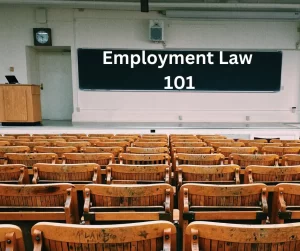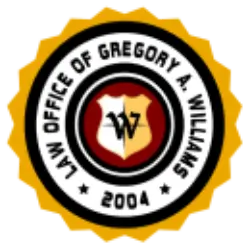
Under Washington State laws, what are “motions” within the context of litigation? Here’s my point of view.
(IMPORTANT: This article is for informational purposes only and is based upon my point of view. Due to the rapidly changing nature of the law, we make no warranty or guarantee concerning the accuracy or reliability of the content in this article. No content on this site, regardless of date, should ever be used as a substitute for direct legal advice from your attorney. Please review our Disclaimer | Terms of Use | Privacy Policy before proceeding.)
Introduction: Motions
Within the context of legal proceedings, motions play a fundamental role in the pursuit of justice and the efficient functioning of the judicial system. In Washington State, as in most jurisdictions, motions serve as crucial tools for parties to request specific actions or decisions from the court. This blog post aims to provide an understanding of what a motion is within the context of Washington State law.
What is a Motion?
A motion is a formal request made by a party to a lawsuit to the court for a specific ruling or action. These requests can encompass a wide range of matters, from procedural issues to substantive legal questions. In Washington State law, motions are vital in shaping the course of litigation and ensuring a fair and just outcome.
Types of Motions
1. Procedural Motions:
These motions pertain to the conduct of the lawsuit rather than the underlying legal issues. Common procedural motions in Washington State include motions for continuance, motions to dismiss, motions for summary judgment, and motions to compel discovery.
2. Substantive Motions:
Substantive motions deal with the actual legal issues of the case. Examples of substantive motions in Washington State law include motions for injunctive relief, motions for a new trial, and motions for judgment as a matter of law (formerly known as judgments notwithstanding the verdict).
3. Interlocutory Motions:
These motions are made before a final judgment in a case, and they typically address temporary or preliminary matters. A common example in Washington State is a motion for a preliminary injunction, which seeks to preserve the status quo while the case is ongoing.
4. Ex Parte Motions:
An ex parte motion is made by one party without notice to the opposing party. These are usually reserved for emergency situations where immediate action is necessary, such as a protective order or temporary restraining order.
5. Oral vs. Written Motions:
In Washington State, parties may make oral motions during court hearings or submit written motions, depending on the specific court rules and the nature of the request. Generally, written motions provide a more detailed and organized presentation of the argument.
General Procedure for Filing a Motion
1. Draft the Motion:
A motion should be drafted carefully, following the relevant rules and format requirements. It must state the specific request, the legal basis for the request, and any supporting evidence or case law.
2. Serve the Opposing Party:
In Washington State, the rules of civil procedure usually require that the motion and any supporting documents be served on the opposing party. The timing and method of service can vary based on the nature of the motion and the court’s rules.
3. Set a Hearing Date:
Many motions in Washington State require a hearing where both parties can present their arguments before the court. The party filing the motion typically schedules this hearing with the court and provides notice to the opposing party.
4. Court Decision:
After the hearing, the court will make a ruling on the motion. The court’s decision may be immediate or take some time, depending on the complexity of the issues involved.
Conclusion
In the complex legal landscape of Washington State, motions are indispensable tools that shape the trajectory of legal proceedings. Whether addressing procedural matters or substantive legal issues, motions are key instruments for parties to seek redress, ensure a fair trial, and promote the orderly administration of justice. Understanding the various types of motions and the procedural aspects of filing them is essential for anyone navigating the Washington State legal system.
Read Our Related Articles
We invite you to read more of our articles related to this topic:
» Employment Law 101: Alternative Dispute Resolution
» Employment Law 101: Definition of Pleading
» Employment Law 101: Depositions
» Employment Law 101: Discovery (WA State)
» Employment Law 101: Legal Theory
» Employment Law 101: Mediation
» Employment Law 101: Remedies
» Employment Law 101: Statute of Limitations
» Employment Law 101: Summary Judgment (WA State)
» Employment Law 101: The Complaint
» Employment Law 101: The Defendant
» Employment Law 101: The Plaintiff
» Employment Law 101: The Summons
LEARN MORE
If you would like to learn more, then consider contacting an experienced attorney to discuss your case. This article is not offered as legal advice and will not establish an attorney-client relationship with Law Office of Gregory A. Williams or the author of this article; please refer to our Disclaimer | Terms of Use | Privacy Policy for more information.
–gw

